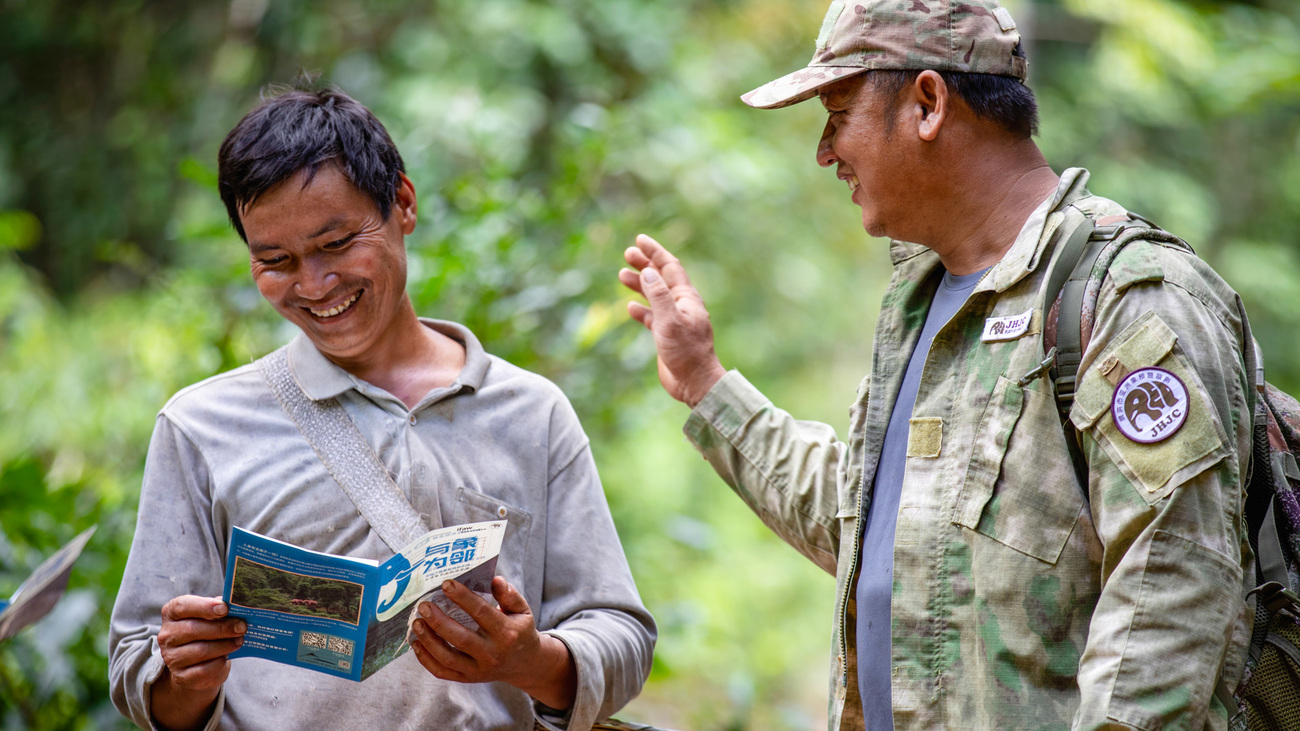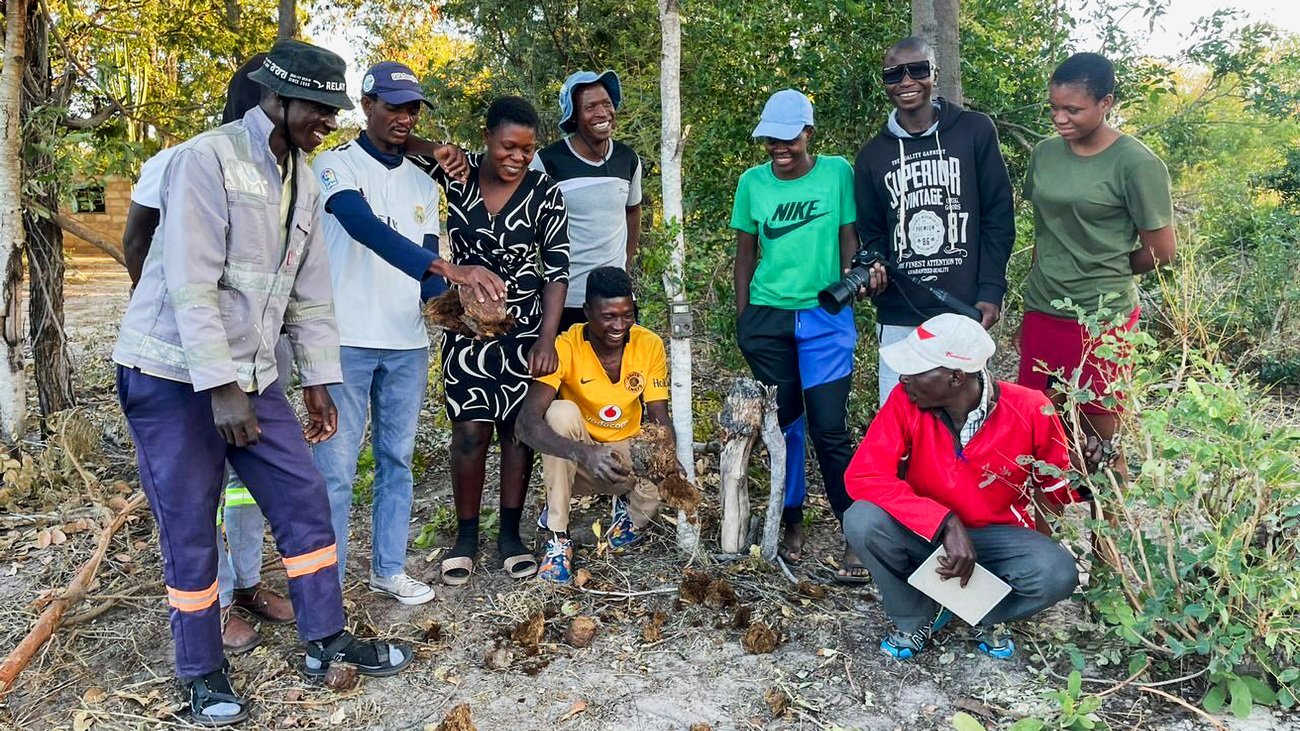Simbarashe Chiseva
How local heroes protect their communities and wildlife
How local heroes protect their communities and wildlife

As the effects of climate change devastate natural resources, the people living closest to nature find themselves increasingly competing with wildlife for water, food, and land—sometimes with deadly consequences.
In many areas, human populations are growing, prompting people to move deeper into wild areas and turn forests and savannahs into farmland and pastures. Meanwhile, large land mammals—such as elephants, lions, and tigers—are roaming beyond protected areas in search of water and food, only to find their hunting and foraging grounds disappearing and their migratory routes blocked. These animals may hunt families’ livestock, destroy their homes and crops, or even kill or injure people. Whether in retaliation or for self-protection, communities then become more likely to kill wildlife or to engage in wildlife crime, like poaching.
These negative interactions are called human–wildlife conflict, and it is a vicious cycle that we need to break.
Human–wildlife conflict directly affects families that lose lives and livelihoods. It is a huge development, humanitarian, and biodiversity concern, so we urgently need to find solutions.
At IFAW, we promote peaceful coexistence between people and wildlife. That’s why we work with the communities living closest to nature to co-create and implement conservation programmes that benefit people, too.
One way we do this is through primary response teams (PRTs): groups of enthusiastic local volunteers, village elders, and influential people who are trained and equipped to respond to conflict situations in ways that protect both people and wildlife.
They are their communities’ first line of defence and should be lauded as conservation heroes.
Volunteers’ roles and responsibilities
PRTs have three overarching goals: to prevent conflicts from happening, to pacify conflicts when they do occur, and to reduce the impacts of conflicts on both people and wildlife.
These goals are all critical to maintaining people’s trust and tolerance for wildlife while supporting safe and secure communities.
Looking at each of those goals, here are some roles volunteers play in protecting their neighbours.
Preventing conflicts
- They identify animals’ locations and alert authorities and nearby communities.
- They educate communities on how to stay safe and what human behaviours or activities might lead to a conflict.
- They periodically patrol conflict hotspots.
- They encourage communities to adopt livelihoods that are more secure from wildlife.
Pacifying conflicts
- They systematically drive away problem animals from human spaces.
- They actively manage crowds during driving or capture operations.
Reducing impact
- They provide emergency first aid to anyone who’s been injured.
- They collect data on conflicts and report it to wildlife authorities, who can then develop better-informed wildlife management plans.

Where we have primary response teams
When we establish PRTs, we consider things like the history of human–wildlife conflict in the area, what resources already exist locally, and what financial resources are available to make the PRTs successful.
In the Room to Roam Greater Hwange Elephant Landscape—in partnership with the Zimbabwe Parks and Wildlife Management Authority (ZimParks), three local government authorities, and three traditional leaders—we piloted the PRT model through the Community Guardians programme in May 2024. The programme trained and equipped 20 volunteers living in the periphery of Hwange National Park.
The PRT model has also helped wildlife conservation within the Kavango Zambezi Trans Frontier Conservation Area, as it is a community-led approach, making it a more effective and sustainable solution for managing conflicts and nurturing human–wildlife coexistence.
In the Room to Roam Malawi–Zambia Elephant Landscape’s Lukusuzi/Luambe communities, we collaborated with the Zambian Department of National Parks and Wildlife, four traditional chiefdoms, and Community Resource Boards to select 48 local volunteers as candidates for PRTs. These potential volunteers will undergo a comprehensive training exercise in August 2024. Human–elephant conflicts have increased since the Malawi government, with financial and technical support from IFAW and African Parks, translocated 263 elephants to Kasungu National Park. PRTs are one way we are supporting communities as the elephants explore their new habitat.

Finally, in 2020 our Asian Elephant Protection (AEP) project established the Community Hero Network initiative near Xishuangbanna Primitive Forest Park, home to most of the 300 remaining wild Asian elephants in China’s Yunnan province. Established in collaboration with Mengal County Forestry and Grassland Administration, the initiative equipped more than 50 local rangers to mitigate human–elephant conflict. The rangers work and live closely with local communities, providing timely support, enhancing safety, and serving as ambassadors for conservation. Through the initiative, we bring professional safety knowledge to rangers and communities to promote the harmonious coexistence of humans and Asian elephants.
Conservation is a local passion
As the traditional guardians of nature and its resources, Indigenous peoples and other local communities have long been the passionate, vocal protectors of their surrounding ecosystems. By serving as the local experts on wildlife, these volunteers bring even more invaluable knowledge to their neighbours and develop new skills and techniques to conserve the resources on which we all depend.
These heroes are indispensable in bridging the gap that sometimes exists between communities, wildlife authorities, and conservation organisations, strengthening our connections as we all work together towards peaceful coexistence between people and animals.
Related content
Every problem has a solution, every solution needs support.
The problems we face are urgent, complicated, and resistant to change. Real solutions demand creativity, hard work, and involvement from people like you.